ARIZONA – Montezuma’s Castle and Well
The second historic site near Sedona, Montezuma Castle National Monument has more to capture the eye and thoughts of the past than the meager remains of Tuzigoot. Early Spanish explorers thought the “castle” was built by the Aztecs. An offshoot of the monuments is called Montezuma’s Well, a watering source used by the local people for irrigation. Both parts are misnamed as the Aztecs lived thousands of miles south and the castle is a cliff house and there is no well.
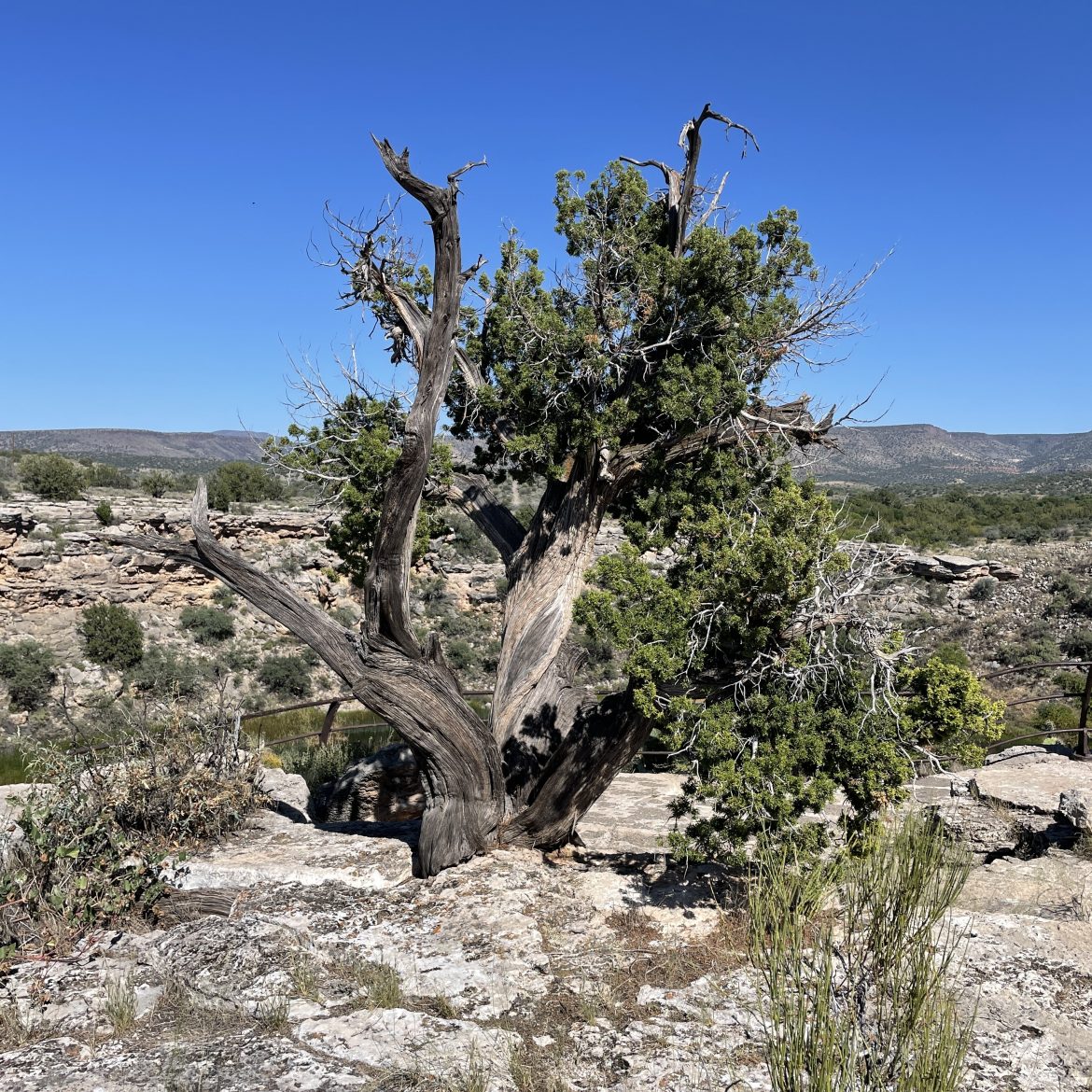
We began at the “well,” a limestone sinkhole fed by continuously flowing springs under the desert scrublands. After climbing up to the rim in 95-degree heat, I stood by a wind and heat-blasted twisted juniper to look at an algae and reed-fringed round pond. It looked viscous in the boiling heat, definitely not a swimming hole with the water containing high amounts of carbon dioxide and arsenic. No fish but five unique species survive including leeches that don’t suck blood but eat tiny crustacean. Even so, their presence is a compelling reason to keep one’s toes away in case the leeches are looking for a dietary supplement.
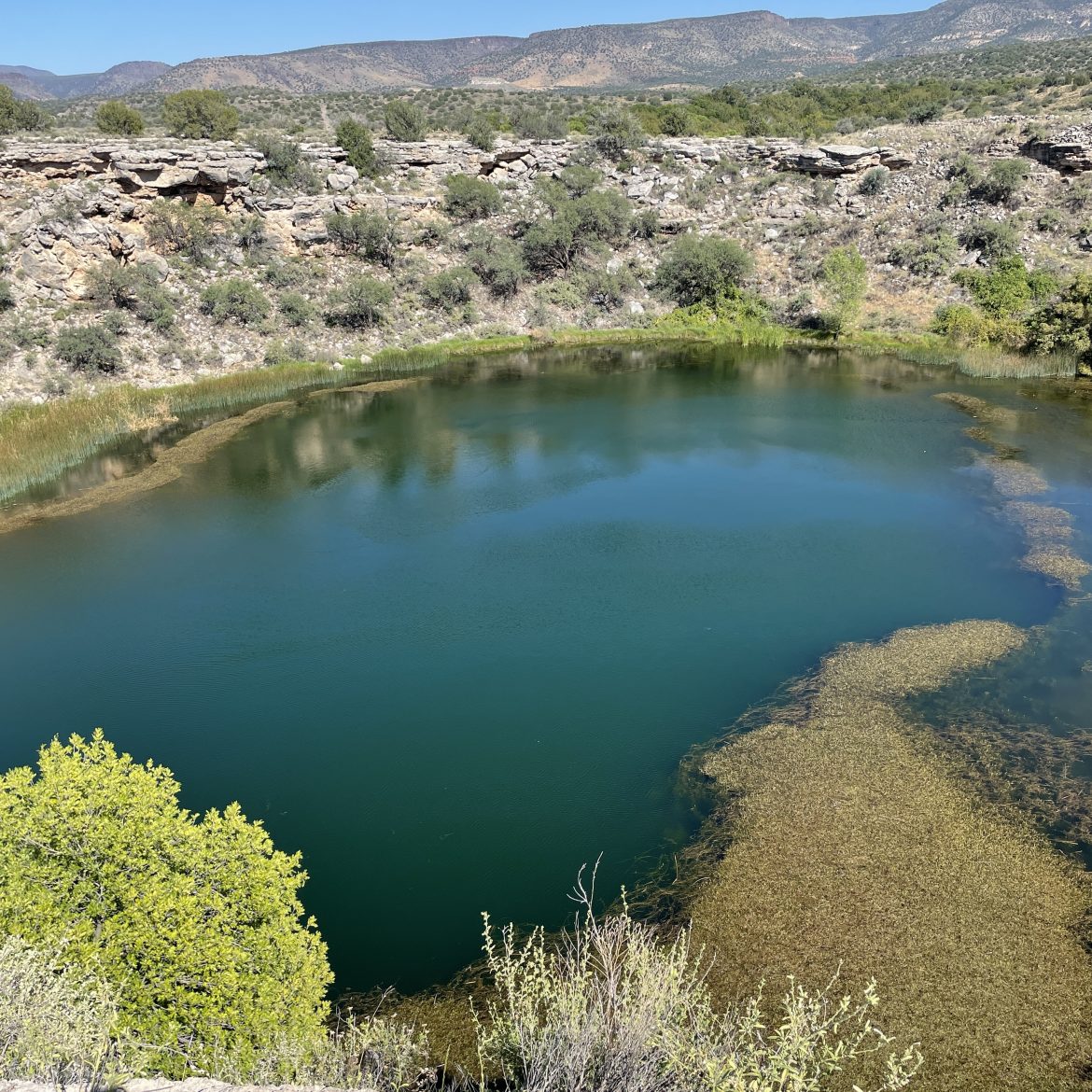
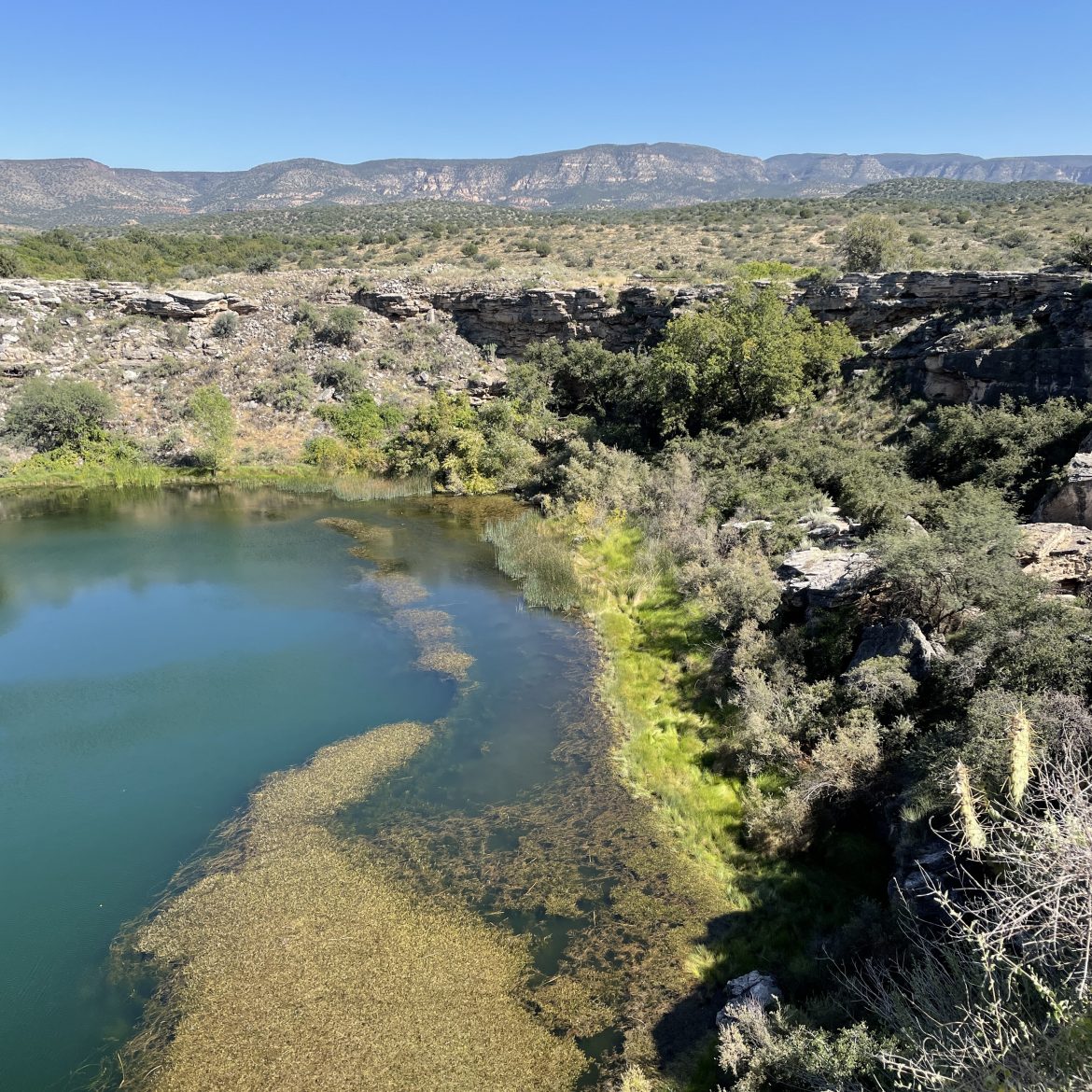
I was much too hot to descend 112 steps down to the water (and back up) anyway, but I could see cliff dwellings built by the Sinauga people tucked away under the limestone rim. It must have been cozy in the blazing heat of summer. Interestingly, the name Sinauga means without water, attesting to their culture that survived with a bare minimum.
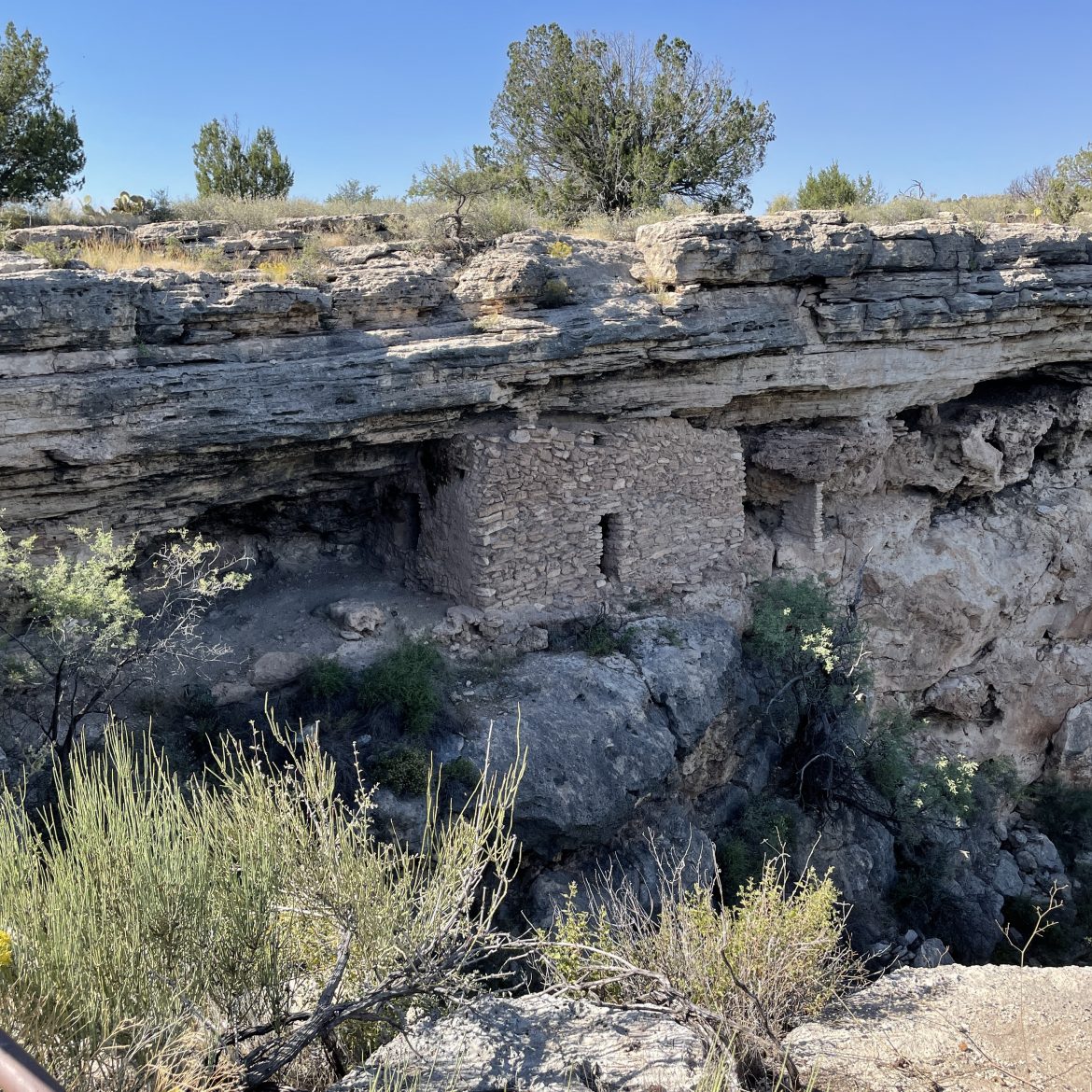
Nearby are the remains of a pit house where the earlier Hohokam peoples lived. It dates to about 1050 AD. We looked down to see the remaining oval floor with holes where two timbers held up a roof made of smaller timbers and reed thatch. The thought of living underground like this is unimaginable to me: Claustrophobic with its eternal darkness. I don’t know how they survived but they did for many generations until like at other sites, they moved on.

More relatable is the “Castle,” a cliff house tucked into an overhang, practically a four-star location in comparison to the pit house. The site isn’t extensive like Mesa Verde in New Mexico but still gives a glimpse into the building skills of these industrious peoples. The dwelling appears to be high over the floor of the valley although in reality it is “only” 100 feet. Still, climbing a ladder, surely not OSHA approved, up and down for farming and hunting must have taken a terrible toll. Like at Tuzigoot, windows were not a priority. Perhaps their building skills were insufficient or perhaps it was for protection. Whatever the reason, I imagined the women inside hoping for a sunny day to cast a few beams of light into the home or storeroom.
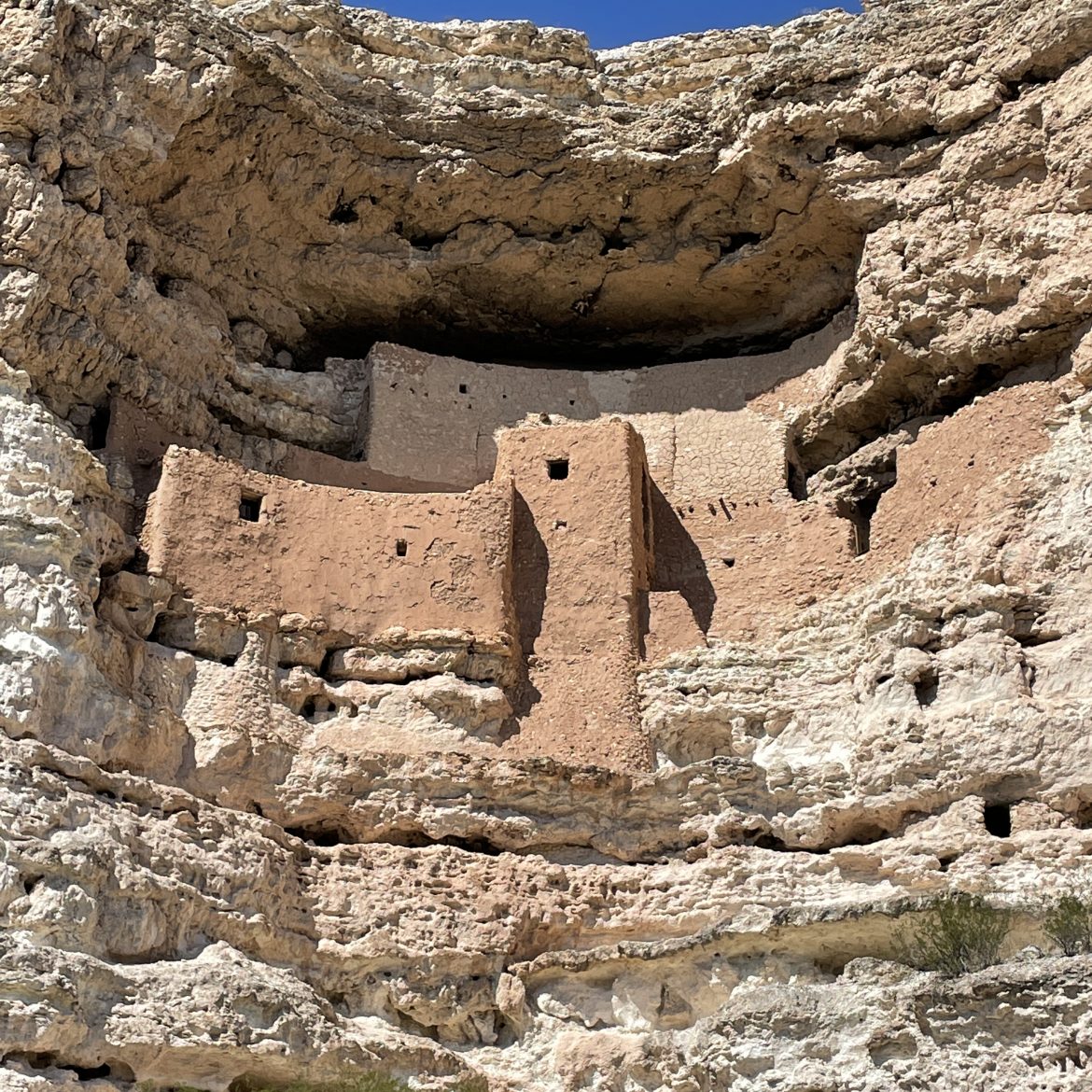
By 1425 the dwellings were empty but descendants like the Hopi, Zuni and Yavapai still return to honor the site. The Western Apache as well revere this landscape. Where did these people come from? New theories add that they may have come by sea as well as the land bridge from Asia during the Ice Age. And the timelines are repeatedly pushed back from 13,000 years ago to perhaps 30,000 with every new relic discovered.
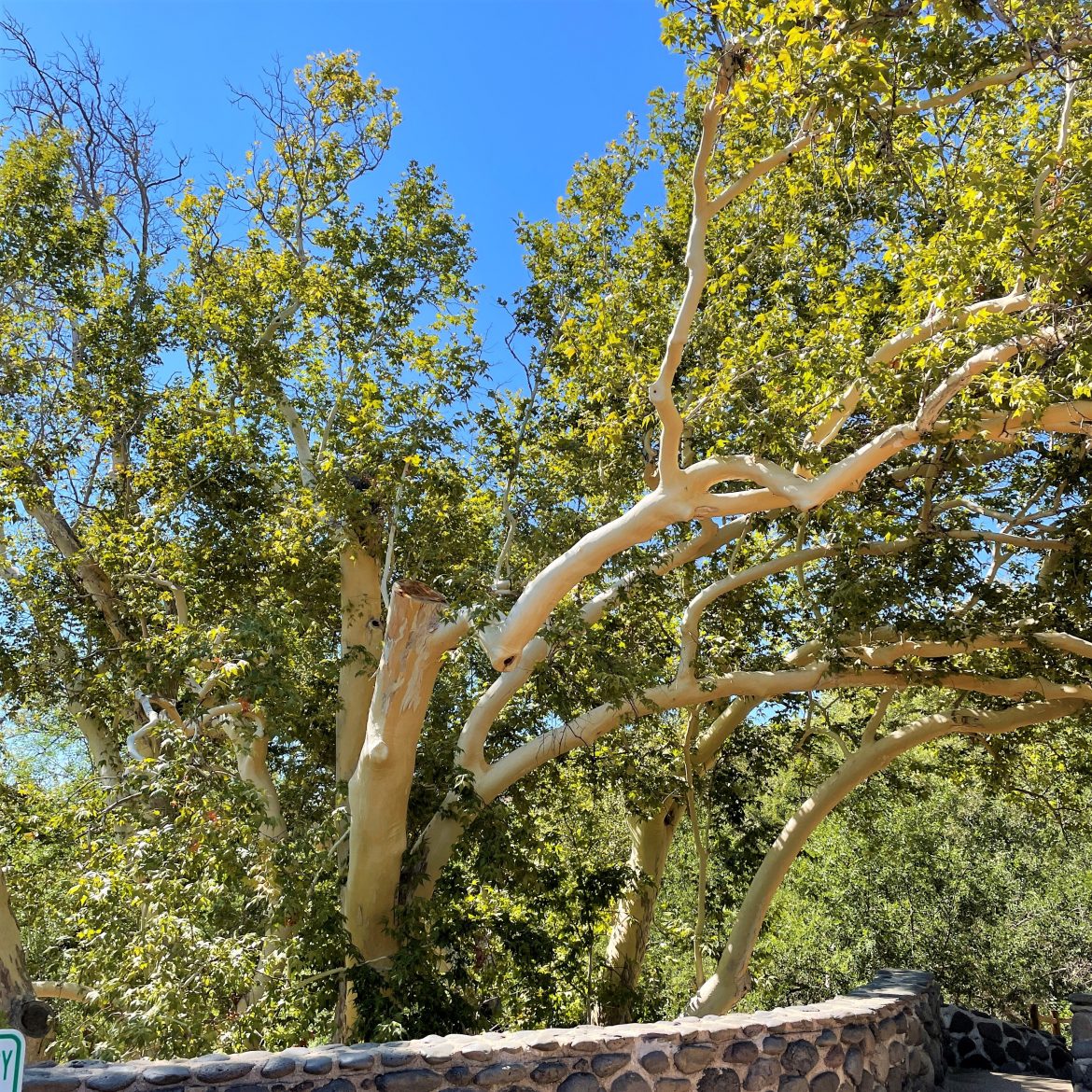
The hot breeze rustled the dried grasses and the leaves of the cottonwood and sycamore trees while I tried to picture these peoples climbing on unsteady ladders into their nearly windowless storage rooms and homes and wondered if we are headed for the same fate: to disappear only to have future generations gawk in wonder at the ruins we may leave and wonder where we went.
All photos copyright Judith Works except that of the Pit House floor from the National Park Service.
For more photos of the National Monument see Photos & Multimedia – Montezuma Castle National Monument (U.S. National Park Service) (nps.gov)


Jane Nesvig
Your travel blogs are ever fascinating with vivid descriptions and historical information. Thanks, Judith.
Laura Moe
I imagine the underground house was cooler than above ground. But it did seem creepy.
judithworks
And it must have been freezing at night in the high desert winters.